Historical Reconstruction - Fort William Henry
For The Decrypters on the National Geographic Channel
For The Decrypters on the National Geographic Channel

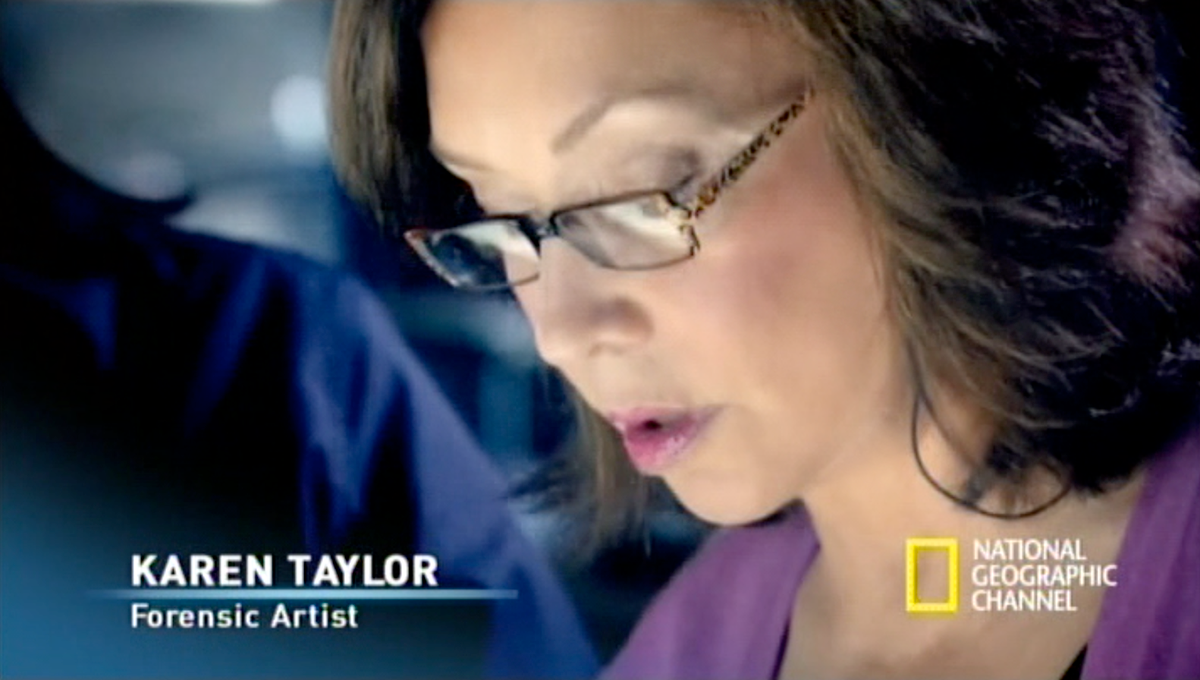
The Decrypters is a series produced by Shine Television of London which aired on the National Geographic Channel in the US. For each episode the "Texas Team", composed of anthropologists from the Forensic Anthropology Center at Texas State University (FACTS) and other specialists, examined historically interesting skeletal cases using modern investigative methods. It was my task to assess each of the various skulls and artistically determine how the individual might have looked in life.
The episode called "The Last Mohican?" centered around a skeleton found at Fort William Henry in Lake George, New York. The fort was active during the French and Indian War, 1754-1763, a conflict between France and Great Britain. Both sides had Native American allies from multiple tribal groups. The violent siege and massacre in 1757 were later memorialized in the 1826 novel by James Fenimore Cooper, The Last of the Mohicans.
The episode called "The Last Mohican?" centered around a skeleton found at Fort William Henry in Lake George, New York. The fort was active during the French and Indian War, 1754-1763, a conflict between France and Great Britain. Both sides had Native American allies from multiple tribal groups. The violent siege and massacre in 1757 were later memorialized in the 1826 novel by James Fenimore Cooper, The Last of the Mohicans.

This early book edition includes cover art by renowned illustrator N. C. Wyeth.

The 1757 massacre is depicted in this engraving done by Alfred Bobbett around 1870 after a painting by Felix Darley.

The skull was in excellent condition despite the fact that it was more than 250 years old. An assessment of the skeleton by the team's anthropologists determined it to be Native American of unknown tribal affiliation. This strong male had been buried in an honored and revered manner along side British soldiers. Indications were that he was held to be an important and respected person by the occupants of the fort.

The right lateral view of the skull shows where I applied a bit of clay to stabilize the mandible for photography. There was slight damage to the zygomatic arch or cheekbone.

Using an approach I developed in the mid-80s and have frequently employed in forensic identification cases, the facial image was drawn over the architecture of the skull. The overall forms of the head were revealed and then each feature was determined according to anatomical formulas described in my text Forensic Art and Illustration.

The drawings are done on tracing vellum over one-to-one photos of the skull applying tissue depths according to anthropological standards for various bony landmark locations. Artistically, I try to "feel" my way around the structures of the skull with my pencil so that the resulting face reflects the subtleties of the facial forms. One of the anthropologists, Dr. Kate Spradley, commented that she could "see" how I was thinking my way around the skull, which made me really happy. All in all, this was a very rewarding case study for me.
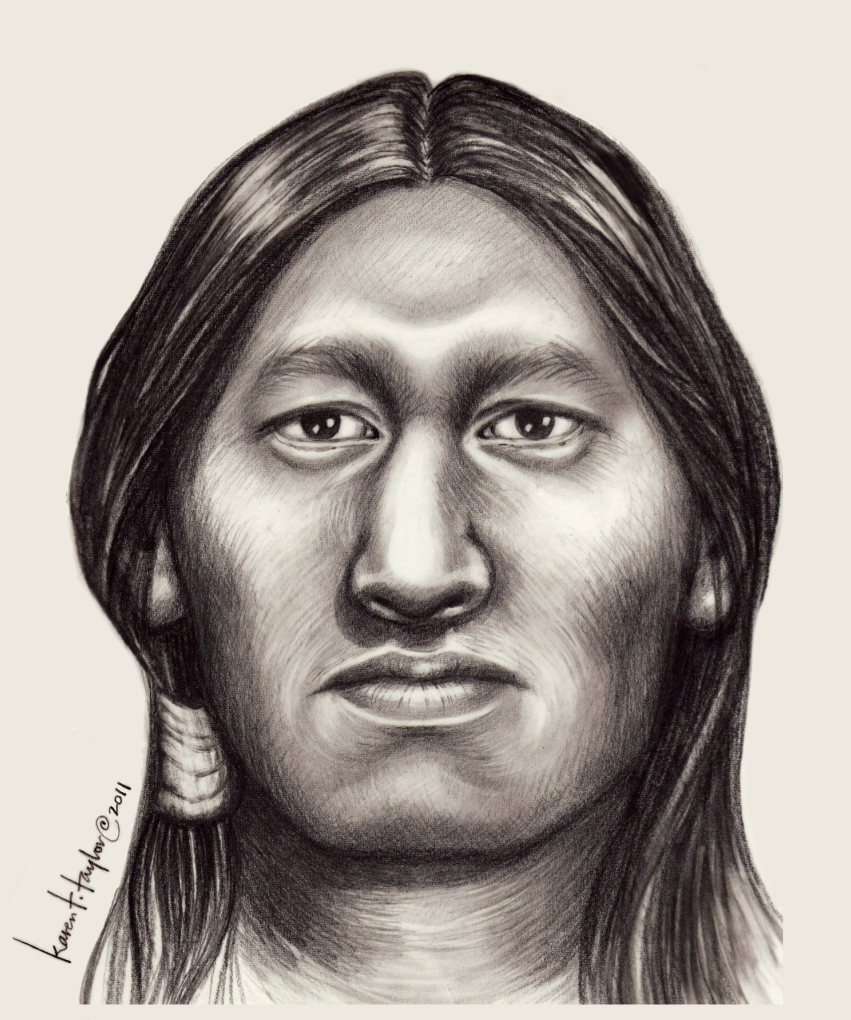
My vision reveals the handsome face of an early Native American, strong and proud.
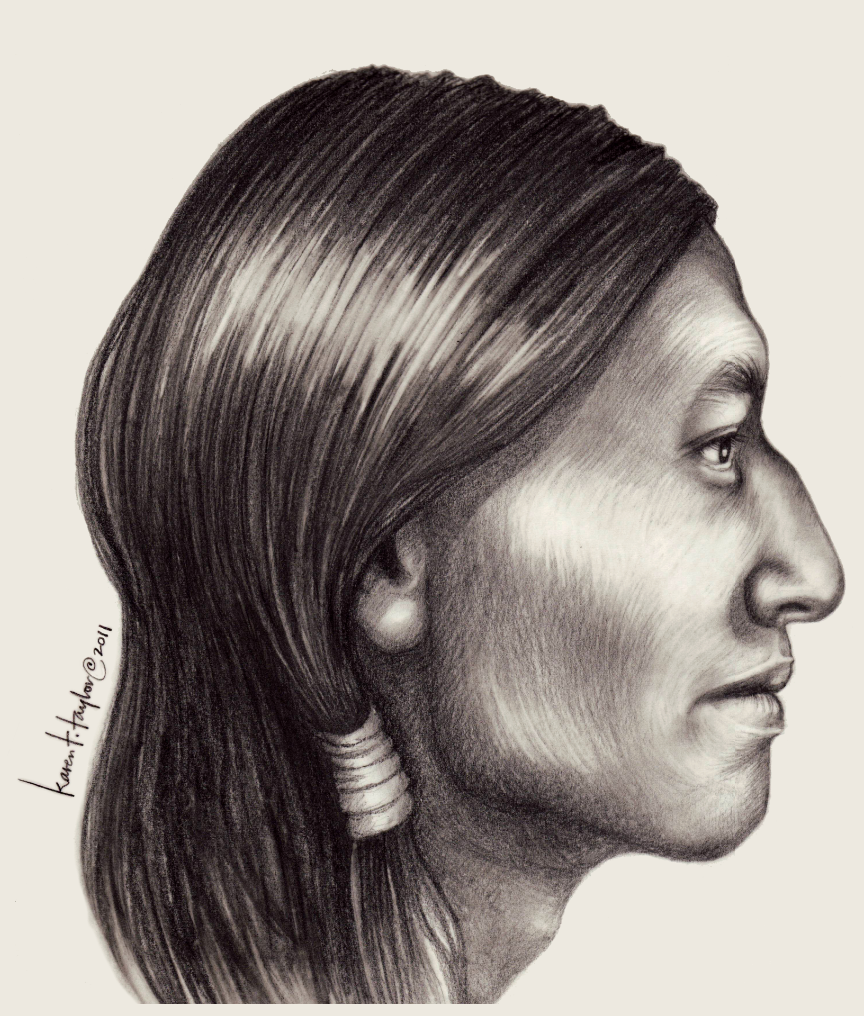
The lateral drawing highlights the shallow head depth sometimes seen in this ancestral group. Another feature is the "chignon" or rounded prominence on the center back of the head.
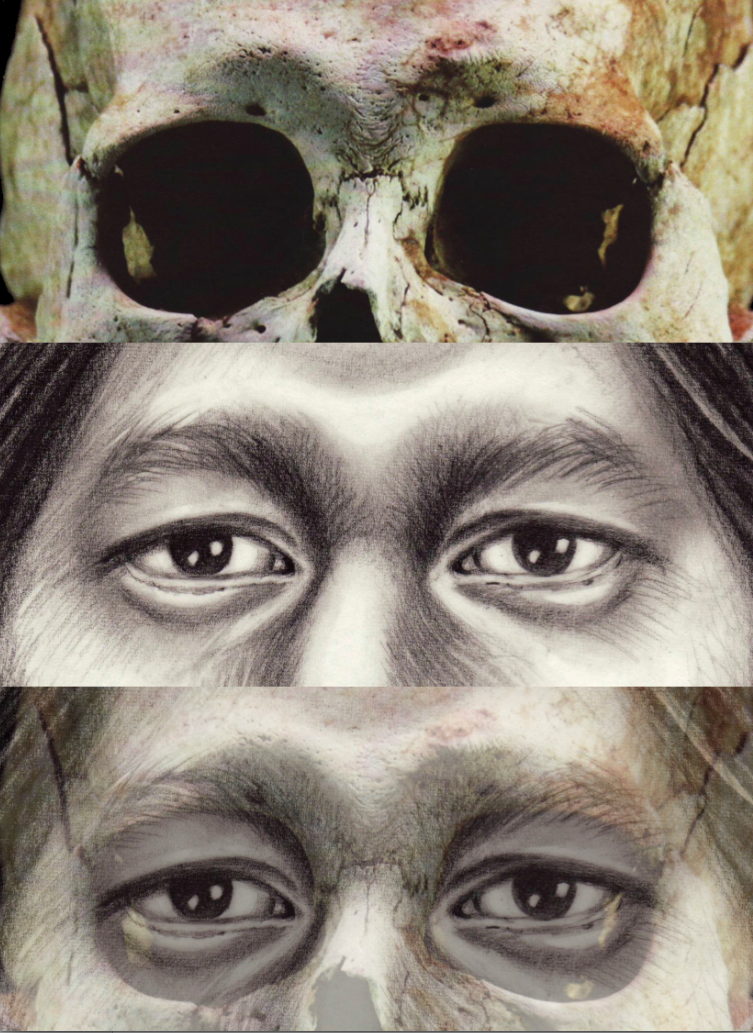
This eye area detail shows how I believe the structure of the bony brow ridges would determine the look of the brow area on the surface of the face. Similarly, the crooked bridge of the bony nose would dictate the appearance of the soft tissue bridge of the nose.
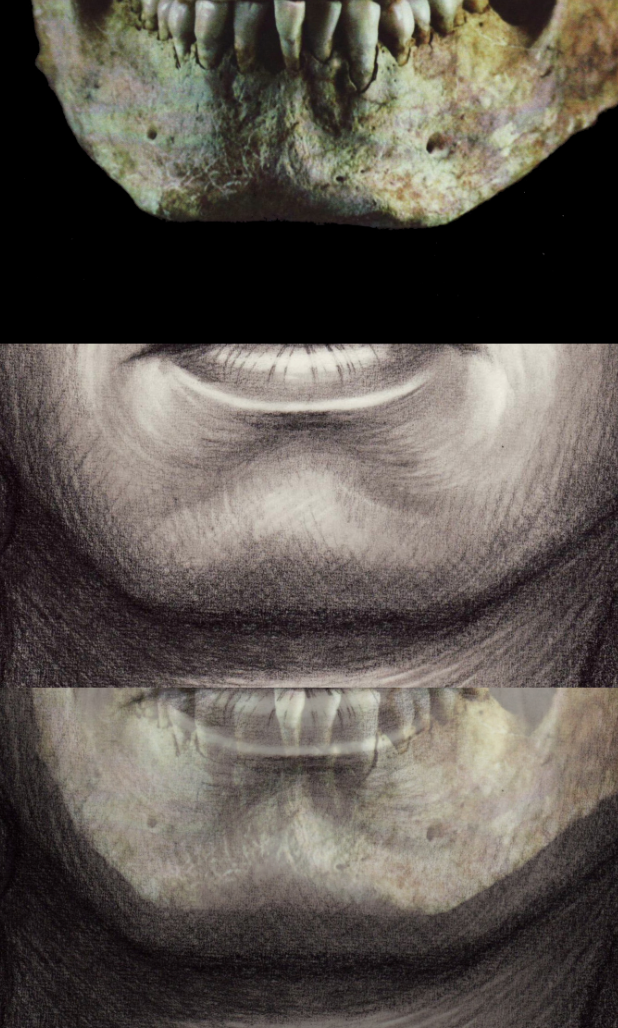
Detail of the chin, showing how the mounded form on the surface is determined by the skull beneath

This is a photo taken on the set while I was "in the zone" working and oblivious to the camera.

This skull-face comparison will hopefully reveal my efforts to depict as accurate a face as possible. It was a privilege to be a part of this project to help restore the humanity of this long-ago hero.


